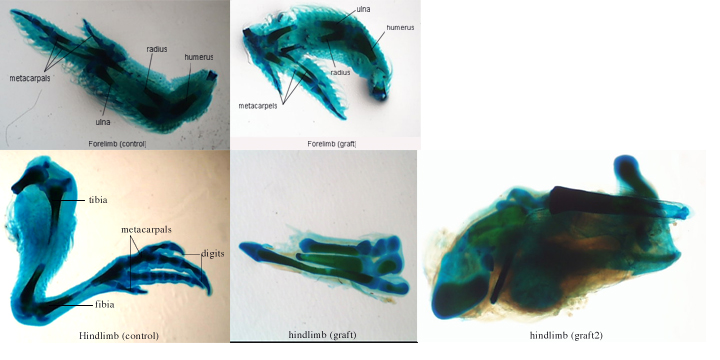|
|

|
In a second experiment, both
hindlimb and forelimb grafts were able to form cartilage,
but again developed primarily distal structures compared to
control embryos (fig. 8)

|
Figure 8. Cartilage
development in 5-day chick limbs grafted on the
chorioallantoic membrane.
|
Discussion
|
The results of this
experiment suggest that cartilage formation is
possible in limb grafts, but that cartilage
formation is maximal when the limbs and
chorioallantoic membrane are left completely intact
in embryos.. Since limbs are capable of moderate
cartilage formation when grafted onto the
chorioallantoic membrane, the CAM is able to supply
calcium to extraneous limb grafts through mere
contact. These results suggest that the
chorioallantoic membrane plays an active role in
facilitating calcium transport for bone formation
in chick embryos.
|
|



![]()
![]()
![]()